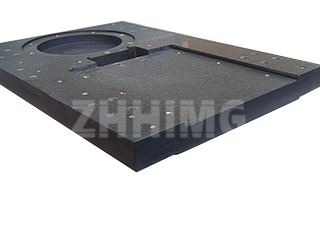When selecting a granite precision surface plate, one of the most important factors to consider is its flatness accuracy grade. These grades—commonly marked as Grade 00, Grade 0, and Grade 1—determine how precisely the surface is manufactured and, therefore, how suitable it is for various applications in manufacturing, metrology, and machine inspection.
1. Understanding Flatness Accuracy Grades
The accuracy grade of a granite surface plate defines the allowable deviation from perfect flatness across its working surface.
-
Grade 00 (Laboratory Grade): The highest precision, typically used for calibration laboratories, coordinate measuring machines (CMMs), optical instruments, and high-precision inspection environments.
-
Grade 0 (Inspection Grade): Suitable for precision workshop measurement and inspection of machine parts. It offers excellent accuracy and stability for most industrial quality control processes.
-
Grade 1 (Workshop Grade): Ideal for general machining, assembly, and industrial measurement tasks where moderate accuracy is sufficient.
2. How Flatness is Determined
The flatness tolerance of a granite plate depends on its size and grade. For example, a 1000×1000 mm Grade 00 plate may have a flatness tolerance within 3 microns, while the same size in Grade 1 could be around 10 microns. These tolerances are achieved through manual lapping and repeated precision testing using autocollimators or electronic levels.
3. Choosing the Right Grade for Your Industry
-
Metrology Laboratories: Require Grade 00 plates to ensure traceability and ultra-high precision.
-
Machine Tool Factories and Equipment Assembly: Commonly use Grade 0 plates for precision component alignment and testing.
-
General Manufacturing Workshops: Typically use Grade 1 plates for layout, marking, or rough inspection tasks.
4. Professional Recommendation
At ZHHIMG, each granite surface plate is manufactured from high-quality black granite with superior hardness and stability. Every plate is precisely hand-scraped, calibrated in a controlled environment, and certified according to international standards such as DIN 876 or GB/T 20428. Selecting the right grade ensures not only measurement accuracy but also long-term durability and performance.
Post time: Oct-11-2025

